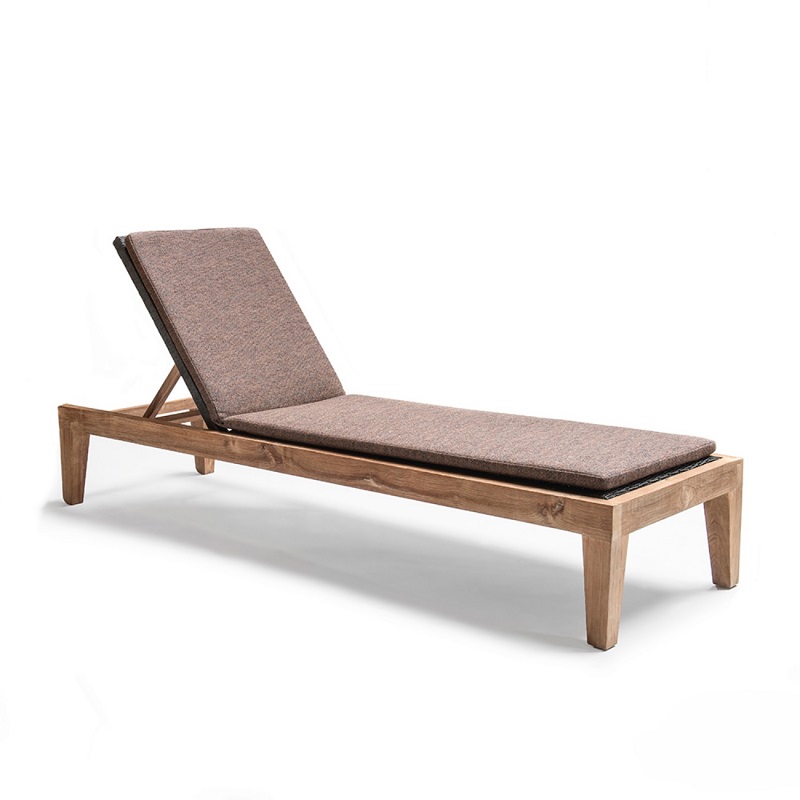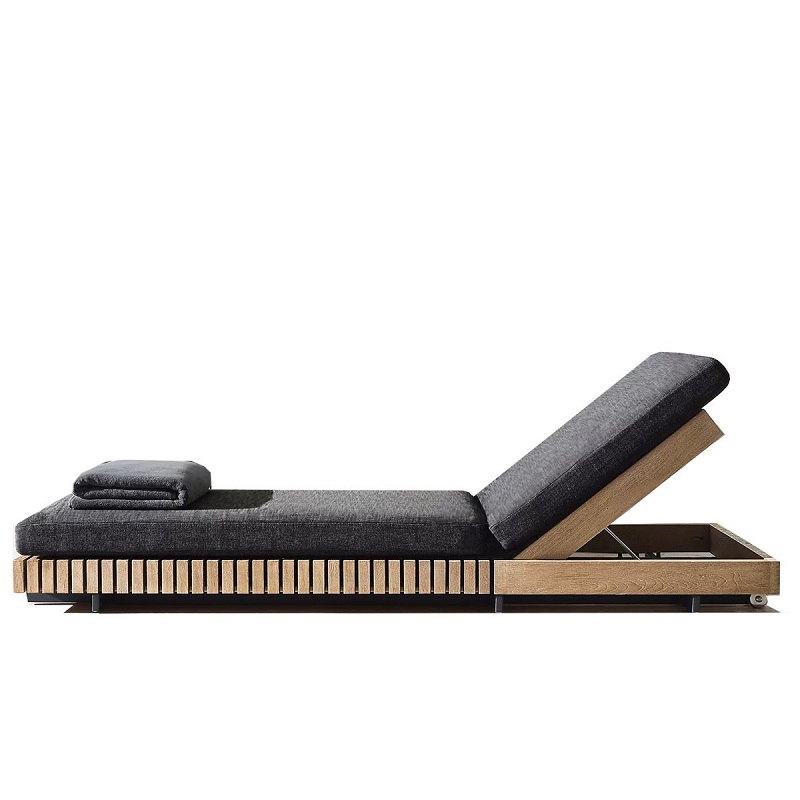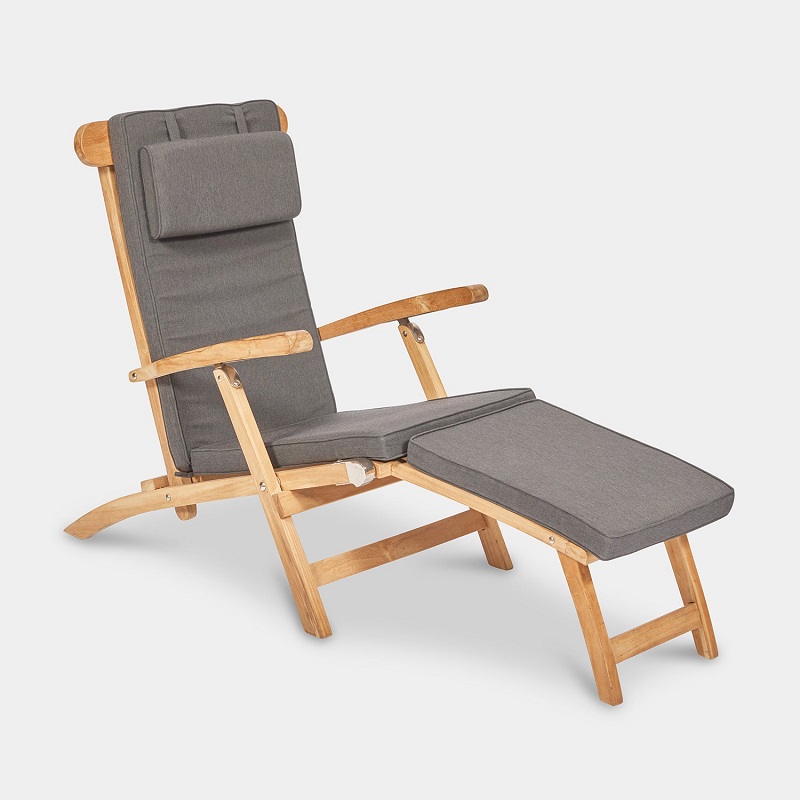Teak sun loungers are a popular choice for creating a stylish and comfortable outdoor relaxation area. Known for their durability, elegance, and natural resistance to the elements, teak loungers can transform any patio or garden into a luxurious retreat. This guide will delve into the key factors to consider when choosing a teak sun lounger, as well as tips for using and maintaining it to ensure it remains a centerpiece of your outdoor space for years to come.
Understanding Teak Wood
Why Teak is a Superior Choice
Teak wood has long been celebrated for its exceptional properties, making it a preferred material for outdoor furniture. It is renowned for its high oil content, which provides natural resistance to moisture, insects, and decay. This makes teak particularly well-suited for outdoor environments where exposure to the elements is a constant concern. Unlike many other types of wood, teak does not require chemical treatments to maintain its durability, making it an eco-friendly choice. Additionally, teak’s dense grain contributes to its strength and longevity, ensuring that your sun lounger will withstand heavy use and harsh weather conditions.
The Aging Process of Teak
One of the unique characteristics of teak wood is its aging process. When first purchased, teak furniture is often a rich, golden-brown color. Over time, and with exposure to sunlight and rain, the wood will gradually weather to a silver-gray patina. This natural aging process does not affect the structural integrity of the wood, but rather enhances its visual appeal. Some homeowners prefer the silver-gray look for its classic, weathered charm, while others may choose to maintain the original color by regularly applying teak oil or sealant. Understanding this process can help you make informed decisions about the appearance and maintenance of your sun lounger.

Features to Look for in a Teak Sun Lounger
Comfort and Ergonomics
When selecting a teak sun lounger, comfort should be a top priority. Look for loungers with adjustable backrests to allow for various lounging positions, from upright reading to fully reclined sunbathing. The ergonomics of the lounger should support your body comfortably, reducing the risk of strain or discomfort during prolonged use. Additionally, consider loungers with padded cushions or ergonomic designs that enhance relaxation. Cushions should be made from weather-resistant fabrics to ensure they withstand outdoor conditions while maintaining their comfort and appearance.
Size and Dimensions
The size of the sun lounger is another crucial consideration. Measure the available space in your outdoor area to ensure the lounger fits comfortably without overcrowding the space. Teak sun loungers come in various sizes, from compact single loungers to larger models that can accommodate two people. Think about how you plan to use the lounger—whether for solo relaxation or as part of a larger seating arrangement. Ensure the lounger provides ample space for your body and allows for easy movement. Additionally, consider models with built-in wheels for easy mobility and repositioning.
Teak Sun Lounger Design Options
Traditional vs. Modern Styles
Teak sun loungers are available in a range of design styles, from traditional to modern. Traditional designs often feature intricate carvings and classic lines that evoke a timeless elegance. These loungers may include ornate details and a more formal appearance. In contrast, modern designs focus on clean lines, minimalism, and a sleek aesthetic. Modern teak loungers may incorporate contemporary materials and finishes, offering a more streamlined and sophisticated look. Choose a style that complements the overall design of your outdoor space and aligns with your personal taste.
Additional Features and Accessories
Beyond basic design, many teak sun loungers come with additional features that enhance functionality and convenience. Look for loungers with built-in trays or side tables for holding drinks, books, or snacks. Some models also include adjustable canopies or sunshades to provide protection from the sun. Integrated storage compartments can be useful for keeping outdoor essentials close at hand. Consider these additional features based on how you plan to use the lounger and what will best suit your lifestyle and preferences.
Maintenance and Care for Teak Sun Loungers
Cleaning and Protecting Teak Wood
Maintaining your teak sun lounger involves regular cleaning and protection to preserve its appearance and longevity. Start by cleaning the lounger with a mild soap solution and a soft brush to remove dirt and debris. Avoid using harsh chemicals or abrasive tools that could damage the wood. For a deeper clean, you can use a teak cleaner designed specifically for removing stains and mildew. After cleaning, ensure the lounger is thoroughly dried before applying any protective treatments. To maintain the wood’s natural color, consider applying teak oil or a teak sealer periodically. This will help to protect the wood from moisture and UV damage, preserving its beauty over time.
Addressing Common Issues
Even with regular maintenance, teak sun loungers can encounter common issues such as mildew, discoloration, or minor damage. Mildew can be addressed by cleaning the affected areas with a solution of water and vinegar, followed by thorough drying. Discoloration from weathering can be minimized by applying teak oil or stain to restore the wood’s original hue. For minor damage like scratches or dents, use fine sandpaper to gently smooth the surface, followed by a reapplication of teak oil. If your lounger has significant structural issues, such as loose joints or broken slats, consult a professional for repairs to ensure the longevity of the furniture.
Best Practices for Using Teak Sun Loungers
Positioning and Placement
Proper placement of your teak sun lounger can enhance both its longevity and your comfort. Position the lounger in a location that receives ample sunlight for tanning or relaxation, while also considering any potential shade for cooler moments. Avoid placing the lounger in areas prone to heavy rain or excessive moisture, as prolonged exposure can affect the wood. Additionally, using a cover or storing the lounger during extreme weather conditions can help protect it from damage. If your outdoor area has a lot of dust or debris, consider using a protective cover when the lounger is not in use.
Enhancing Comfort and Functionality
To maximize the comfort of your teak sun lounger, consider adding outdoor cushions or pillows that complement your decor and provide extra padding. Choose cushions made from weather-resistant fabrics to ensure they withstand outdoor conditions. For added convenience, keep a small side table or tray nearby for drinks, snacks, and personal items. Using a footrest can further enhance relaxation by allowing you to elevate your legs. These additional touches can transform your teak sun lounger into a versatile and luxurious spot for outdoor enjoyment.

Enhancing Your Outdoor Space
Integrating with Other Furniture
To create a cohesive and stylish outdoor area, consider how your teak sun lounger will fit with other outdoor furniture. Coordinate with other pieces like dining tables, chairs, or even a pergola to achieve a harmonious look. Choosing furniture with complementary designs and finishes can elevate the overall aesthetic of your space. Additionally, integrating plants, lighting, and outdoor rugs can further enhance the comfort and visual appeal of your lounging area.
Creating a Relaxation Zone
Transform your outdoor area into a dedicated relaxation zone by pairing your teak sun lounger with additional elements that enhance comfort and ambiance. Add a hammock or swing for extra lounging options, and incorporate a water feature like a small fountain to create a soothing atmosphere. Strategically placed outdoor lighting can extend your relaxation time into the evening. Personalize the space with decorative elements like throw pillows and outdoor art to make it uniquely yours.

Conclusion
A teak sun lounger is a valuable investment for any outdoor space, offering both durability and elegance. By understanding the characteristics of teak wood, choosing the right design and features, and adhering to proper maintenance and usage practices, you can ensure that your sun lounger remains a centerpiece of relaxation and style. Whether you’re sunbathing, reading, or simply enjoying the outdoors, a well-chosen and well-maintained teak sun lounger will provide comfort and beauty for years to come.
